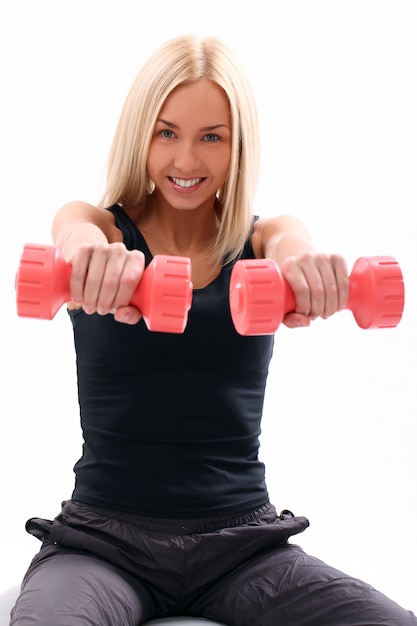The single-arm dumbbell row is a flexible exercise that targets multiple upper body muscle groups, particularly the upper and central back and shoulders. It also works the forearm flexors, though not as intensively as other workouts.
While it’s mainly used in bodybuilding, the one-arm dumbbell row is also beneficial for sports that require strength or muscle growth, like powerlifting. Additionally, it can be useful in health-related contexts such as injury prevention, rehab, and functional conditioning.
Even though this exercise has many benefits, it has some drawbacks compared to other rowing exercises like the standing barbell row.
The Single Dumbbell Row: A Step-by-Step Guide
To perform the single dumbbell row effectively, follow these steps:
1. Positioning: Place a dumbbell of suitable weight next to a flat bench. Stand beside the bench with your legs apart, with the side of your body that will be doing the exercise next to the dumbbell.
2. Stabilize: Put your non-working arm perpendicularly on the bench and bend the knee on the same side to a 90掳 angle, resting it on the bench. Lean forward, placing your non-working side firmly on the bench.
3. Prepare: Extend the opposite leg slightly sideways and backward, giving your working arm enough room to move.
4. Grip: Reach out and grab the dumbbell with your forearm in a neutral position and lift it off the floor.
5. Execute: Inhale and start the rowing motion, focusing on moving your upper arm rather than your forearm. Avoid twisting your torso, a common mistake when using heavy weights.
6. Breathing: You can exhale progressively or at the end of the repetition. The latter helps maintain core stability, especially with heavy loads.
Advantages of the Single Dumbbell Row
The single dumbbell row offers several benefits. It almost completely isolates the back muscles, reducing the involvement of the forearm flexors. If performed with one knee on a bench, it鈥檚 particularly good for those with lower back pain, as this position distributes weight onto the arm and knee, reducing strain on the spine.
Disadvantages of the Single Dumbbell Row
Despite its advantages, the single dumbbell row has some drawbacks. Compared to standing rows, it involves less overall effort and limited engagement of deep back muscles, the quadratus lumborum, and gluteus muscles, making it less functional and less preparatory for weightlifting.
Common Mistakes to Avoid
To ensure the single dumbbell row is performed safely and effectively, avoid the following mistakes:
– Poor positioning on the bench, with the knee or arm too far forward or backward.
– Positioning the non-working leg too close to the bench or dumbbell.
– Losing focus on the shoulder blades.
– Improper synchronization of breathing.
– Excessive twisting or movement of the torso.
– Incomplete range of motion during the row.
In conclusion, the single dumbbell row is a versatile and effective exercise for upper body strength and conditioning. It鈥檚 essential to use proper form and avoid common mistakes to ensure safety and effectiveness.







